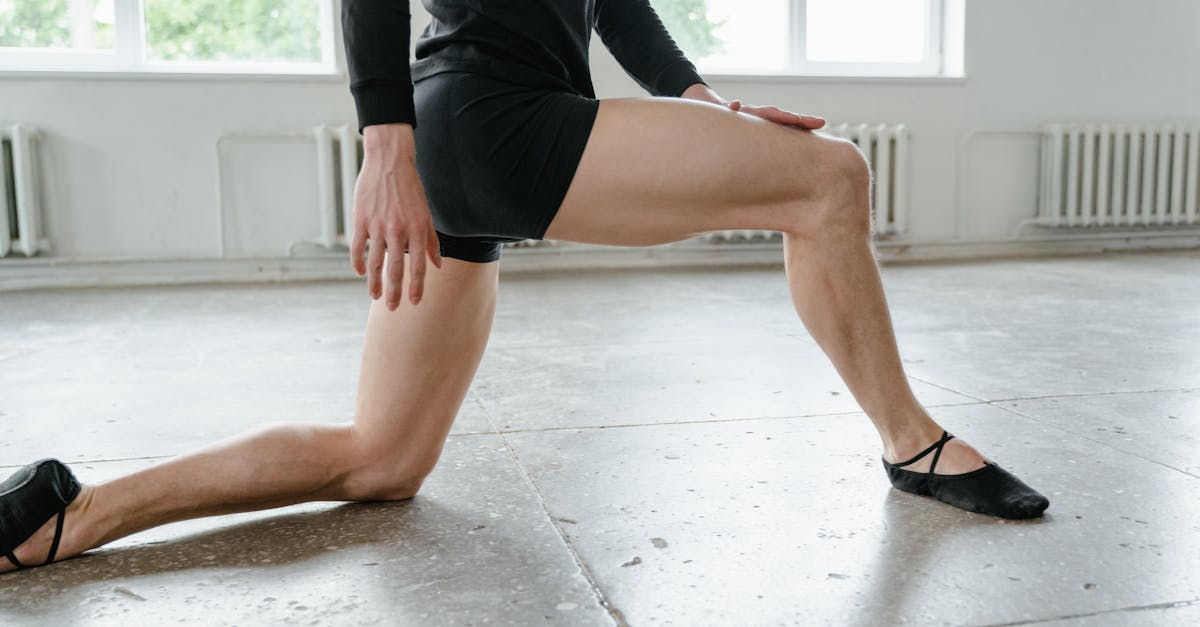
The Role of Dance in Improving Coordination for Adults
Table Of Contents
Creating a Dance Routine
Establishing a dance routine involves careful planning and consideration of individual strengths and preferences. Begin by selecting styles that resonate personally; whether it’s salsa, hip-hop, or ballroom, aligning with a preferred genre can enhance engagement. Incorporate basic movements and gradually add complexity, ensuring that each component strengthens coordination. Repeating sequences allows for muscle memory to develop, making movements more fluid over time.
Incorporating a variety of steps and rhythms is essential for a well-rounded routine. This diversity keeps the training both challenging and enjoyable. Creating a schedule that includes regular practice sessions will help reinforce skills and provide opportunities for refinement. Dance not only offers physical benefits but also brings a sense of achievement as progress becomes evident with dedication and practice.
Key Elements for Effective Coordination Training
Effective coordination training involves various components that cater to different skill levels. Rhythm is a foundational aspect; it helps individuals move in sync with music or a partner, enhancing both timing and precision. Incorporating balance exercises into dance routines also plays a critical role. Maintaining stability while executing movements increases body awareness and strengthens the connection between mind and body.
Flexibility is another vital element for improving coordination. Stretching routines not only prevent injuries but also promote a broader range of motion. Practising footwork and body transitions contributes significantly as well. Repetitive practice of specific sequences helps build muscle memory, enabling dancers to perform movements seamlessly without conscious thought. Engaging in these training aspects can lead to noticeable improvements in overall coordination.
Social Interaction Through Dance
Engaging in dance offers a unique opportunity for social interaction among adults. Classes often bring together individuals with varying backgrounds and experiences, creating a vibrant community. Participants can form bonds while learning new moves, cultivating friendships beyond the dance floor. This shared experience fosters a sense of belonging and connection in a supportive environment.
Dance also encourages communication through non-verbal expressions, allowing participants to convey emotions and thoughts without words. It provides a platform for individuals to collaborate and work together, strengthening teamwork skills. As adults immerse themselves in rhythmic movements, they develop an appreciation for each other’s abilities and styles, promoting inclusivity and understanding within the group.
Building Confidence and Social Skills
Engaging in dance not only enhances physical abilities but also fosters a sense of self-assurance. As adults learn new steps and routines, they often find themselves stepping out of their comfort zones. This process encourages personal growth. With regular practice, participants experience a boost in confidence. Successfully mastering choreography or performing in front of others can lead to a strong sense of accomplishment.
Social skills also flourish in dance settings. Classes often involve working closely with partners, requiring communication and collaboration. Through these interactions, adults learn to express themselves more effectively and build rapport. Joining a dance community creates opportunities for friendships. The shared experience of learning and moving together cultivates a supportive environment, making socialising more enjoyable and less daunting.
Dance Classes for Adult Learners
Participating in dance classes can be an excellent way for adults to develop new skills while enhancing coordination. Various styles are available, ranging from ballet to hip-hop, each providing unique approaches to movement and rhythm. Classes often cater to different experience levels, ensuring that beginners feel welcomed and supported as they learn the basics. The structured environment allows for guided instruction, which can facilitate quicker learning and greater retention of techniques.
Finding the right class is crucial for progress and enjoyment. Local community centres and dance schools frequently offer trial classes, allowing potential students to explore different styles before committing. Additionally, many classes focus on fostering a fun and engaging atmosphere, encouraging social interaction among participants. This not only benefits coordination but also fosters a sense of camaraderie, making the experience more enjoyable overall.
Finding the Right Class for Your Skill Level
Choosing a dance class that matches your skill level is essential for maximising enjoyment and progress. Beginners often benefit from classes designed to introduce foundational techniques and terminology. More experienced dancers may seek out intermediate or advanced sessions that challenge their capabilities while offering opportunities to refine skills and learn new styles.
Researching local dance studios can provide insights into the types of classes available. Many studios offer trial sessions, allowing you to gauge the teaching style and class atmosphere before committing. Engaging with instructors can also help clarify which classes align best with your current abilities and future goals, ensuring a more tailored learning experience.
FAQS
How does dance improve coordination in adults?
Dance enhances coordination by requiring the integration of various body movements, rhythm, and spatial awareness, which helps develop motor skills and balance.
What are the key elements to consider when creating a dance routine?
Important elements include rhythm, timing, body alignment, and the combination of different movement styles that align with your personal goals and preferences.
Can dance help in building social skills for adults?
Yes, participating in dance allows adults to interact with others, fostering communication, teamwork, and social confidence in a supportive environment.
What types of dance classes are available for adult learners?
There are various dance classes available, including ballroom, contemporary, hip-hop, jazz, and salsa, catering to different skill levels and interests.
How can I find the right dance class for my skill level?
Start by researching local dance studios or community centres that offer classes, and consider attending beginner sessions or trial classes to gauge your comfort and skill level.
Related Links
Flexibility Benefits of Dance Classes for Adult BeginnersEnhancing Performance: Coordination Improvement Techniques
Building Stronger Coordination in Adult Dance Environments
The Importance of Flexibility for Adult Dancers
Coordination Challenges: Overcoming Limitations in Adult Dance
Discovering New Levels of Flexibility Through Dance